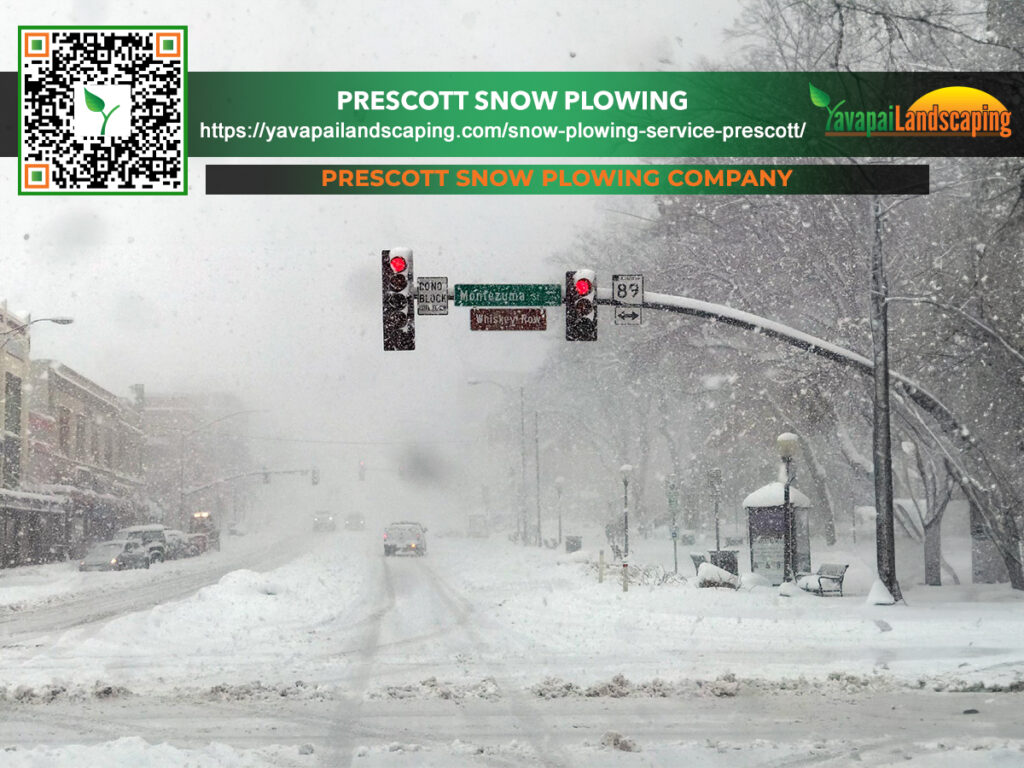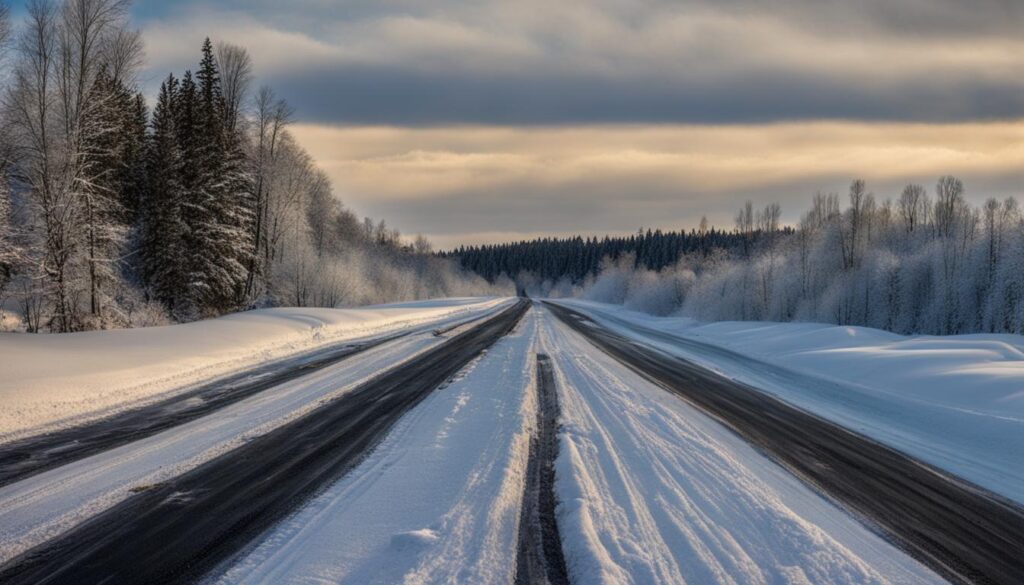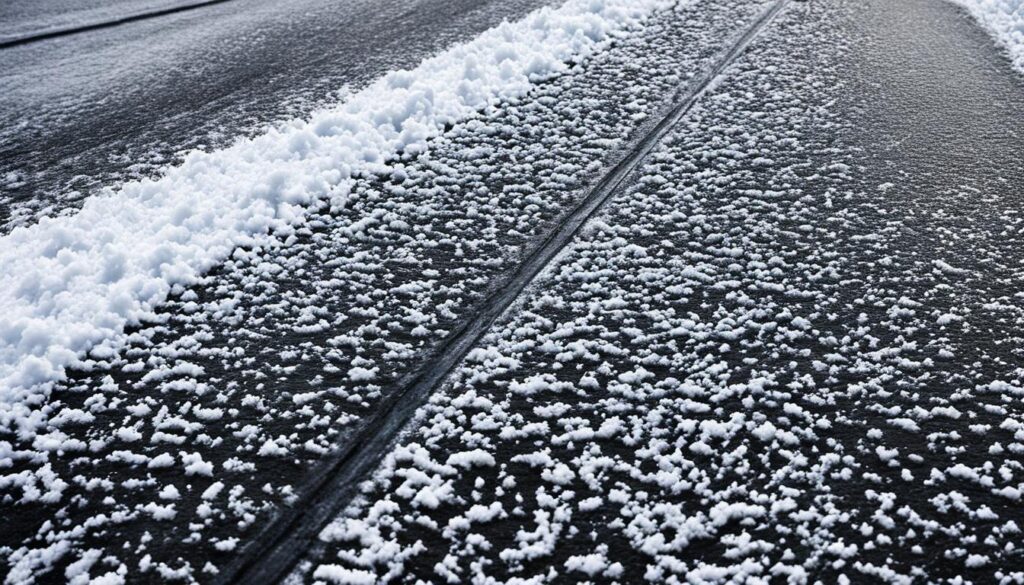
In Prescott, AZ, the charm of winter brings with it the essential service of Prescott Snow Plowing. As residents, you’re no stranger to the annual snowfall that transforms the city into a winter wonderland. While the role of snow plowing is crucial for maintaining road accessibility during these snowy months, it’s important to consider its impact on road longevity. The robust equipment employed for snow plowing, a necessity in this region, can inadvertently lead to road surface damage.
Moreover, the snow plowing process can cause cracks, potholes, and other damage to the road surface that can be both costly and time-consuming to repair. In this article, we will explore the lasting impact of snow plowing on road surfaces in Prescott, AZ, and discuss ways to minimize the damage caused by this winter maintenance practice.
Key Takeaways
- Snow plowing can cause significant long-term damage to road surfaces in Prescott, AZ.
- The heavy equipment used in snow plowing can cause cracks, potholes, and other types of damage to the roads.
- Effective snow removal strategies can help minimize the damage caused by the snow plowing process.
- The type of material used for road surfaces can greatly influence the effects of snow plowing.
- Advancements in snow plowing technology and practices can help reduce the long-term impact of snow plowing on road surfaces in Prescott, AZ.
Understanding Road Surface Damage from Snow Plowing
When it comes to snow removal, using plows to clear roads is a common practice in Prescott, AZ. However, this method can result in damage to road surfaces, leading to costly repairs and potential safety hazards for drivers. To better understand the impact of snow plowing on road conditions, let’s take a closer look at the various types of damage it can cause.
Potholes
Potholes are a common issue caused by snow plowing, particularly when the plows push snow off the roadway onto the shoulder area. This excess weight and pressure can cause pavement fractures and displace road surfaces, ultimately leading to potholes.
Cracks
Cracks can also form as a result of snow plowing. The weight and friction of the plows can cause stress on the road surfaces, leading to cracks that only worsen over time. These cracks can also make it easier for water to penetrate the pavement, resulting in further damage.
Deterioration
Over time, snow plowing can cause significant deterioration of road surfaces. This deterioration can include rough surfaces, uneven pavements, and overall degradation. Not only can this be unsightly, but it can also make driving dangerous by affecting vehicle stability and handling.
In conclusion, it’s important to recognize the potential consequences of snow plowing and its effects on road surfaces. From potholes and cracks to significant deterioration, the damage caused by snow plows can be extensive. By understanding the types of damage that can occur, we can better prioritize preventative measures and ensure timely maintenance to preserve the safety and quality of our roads.
Road Maintenance Needs After Snow Plowing
After snow plowing, road surfaces often require significant maintenance to address the damage caused by the process. The effects of snow clearing on roads can be extensive, including potholes, cracks, and uneven surfaces. Failing to address these issues promptly can further exacerbate the damage, leading to more significant and costly repairs.
The most common maintenance needs after snow plowing are:
| Maintenance Need | Description |
|---|---|
| Pothole Filling | Small or large holes in the road that must be filled to prevent further damage to vehicles and maintain safe driving conditions. |
| Crack Sealing | Filling cracks in the road that can expand and cause further damage if left unaddressed. |
| Asphalt Overlay | Applying a new layer of asphalt over damaged sections of the road to improve the driving surface. |
It is important to note that snow plowing is not the only factor that contributes to road surface damage and that regular maintenance is required to keep roads in optimal condition. Furthermore, the cost of repairing roads after snow plowing can be substantial, which emphasizes the need for effective snow removal practices to minimize the impact.

Strategies for Snow Plowing Damage Control
To preserve road surfaces during snow removal operations and minimize the long-term effects of snow plowing, several damage control strategies can be implemented. These techniques and best practices can go a long way in helping maintain the integrity of roads, reducing the need for extensive repairs and costly maintenance.
Use the Right Equipment
Using the right equipment for snow plowing can significantly reduce damage to road surfaces. Equipment such as rubber blades, snow tires, and wing plows can protect the underlying road structure. You should also ensure that plows are calibrated to minimize contact with road surfaces, reducing the risk of damage.
Apply Deicers Sparingly
While deicers help to keep the roads clear of ice and snow, they can also cause damage to road surfaces. Overuse of deicers can result in cracks, potholes, and other forms of surface damage. Therefore, it is essential to apply deicers sparingly, using only the necessary amount to achieve the desired result.
Regular Maintenance
Regular maintenance can help detect and repair minor damage before it becomes a more significant issue. Some examples of preventative maintenance include filling potholes and sealing cracks. It is also important to make sure all drainage systems are functioning correctly, as excess water can seep into small surface cracks, leading to further damage.
Applying the above strategies for snow plowing damage control can help preserve road surfaces during snow removal operations. Not only will this help keep road surfaces intact and reduce repair costs, but it will also ensure safe and smooth driving conditions even amid winter weather.
Factors Influencing Road Deterioration from Snow Plowing
Snow plowing is a vital practice for maintaining road safety during winter in Prescott, AZ, but it can also cause significant damage to road surfaces. The degree of road deterioration depends on several factors that affect the plowing process. These factors include:
- Weather conditions: Extreme weather conditions, such as heavy snowfalls, can necessitate frequent snow removal, which increases the likelihood of road damage.
- Equipment used: The type and condition of equipment used in snow plowing can directly impact road surfaces. Poorly maintained or outdated equipment can cause more damage than well-maintained, modern ones.
- Road materials: The materials used for road surfaces also play a role in how they react to snow plowing. Materials that are too soft or brittle can be easily damaged.
Understanding these factors can help government authorities, snowplow contractors, and other stakeholders in developing an effective snow management strategy that minimizes road surface damage.
The Importance of Timely and Effective Snow Removal
When it comes to snow removal, timing is everything. The longer snow is left on the roads, the greater the damage it can cause to road surfaces over time. In addition, ineffective snow removal practices can also contribute to unnecessary wear and tear on roadways.
By prioritizing timely and effective snow removal, you can help keep road surfaces in good condition and minimize the long-term impact of snow removal on roads. Promptly removing snow from roads can help prevent ice formation, reduce the amount of salt and other corrosive materials needed for treatment, and limit exposure to freeze-thaw cycles that can cause damage to surfaces.
Effective snow removal practices involve using appropriate equipment and techniques to clear snow as thoroughly and efficiently as possible. This can include using plows, salt trucks, and other specialized equipment to remove snow and ice from roadways. By making use of these tools, snow removal crews can clear roads in a way that minimizes damage to surfaces and allows for safe, smooth driving conditions.
Overall, timely and effective snow removal is essential for preserving the condition of road surfaces in Prescott, AZ. By prioritizing these practices, you can help ensure that roads remain safe and functional even during the winter months. Enhance your knowledge about How Can Residential Snow Removal Services Enhance Home Safety.
The Role of Road Surface Materials in Snow Plowing Effects
When it comes to the impact of snow plowing on road surfaces, the type of material used is a crucial factor. Different road surface materials have varying levels of susceptibility to damage caused by snow plowing. In Prescott, AZ, common road surface materials include:
| Road Surface Material | Pros | Cons |
|---|---|---|
| Asphalt | Durable and smooth surface that provides good traction | Can crack or become brittle in extreme temperatures and heavy snowfall |
| Concrete | Durable and able to withstand heavy traffic | Poor traction in icy conditions |
| Gravel | Provides good traction and is cost-effective | Requires frequent maintenance and can be prone to potholes and washouts |
| Dirt | Easy and inexpensive to construct | Prone to developing potholes and muddy conditions in wet weather |
As the table above shows, each road surface material has its advantages and disadvantages when it comes to snow plowing effects. While asphalt and concrete are more durable, they can also be prone to damage in certain conditions. Gravel and dirt, on the other hand, require more maintenance but may be more resilient to the impact of snow plowing. By understanding the unique properties of different road surface materials, snow removal professionals can take steps to minimize damage while clearing roadways.

Innovations in Snow Plowing to Reduce Long-Term Impact
Modern snow plowing technology and practices have contributed to reducing the long-term impact on road surfaces in Prescott, AZ. These innovations focus on minimizing damage during snow removal while improving the overall condition of roads. Here are some of the most promising developments in the field of snow removal:
1. Materials Science Advancements
New materials are being developed that are more resistant to damage caused by snow plows. These materials include proprietary blends of asphalt and concrete that have increased durability and are less prone to cracking and potholes. Additionally, more eco-friendly alternatives such as recycled materials are being used to construct roads in some areas.
2. GPS Technology
Contemporary snow plows use GPS technology to map roads while tracking and monitoring the status of their work. This enables operators to plow more efficiently, focusing their efforts on heavily impacted areas and avoiding over-plowing and under-plowing. GPS technology also helps maintain consistency in the quality of road surfaces across the entire network.
3. Anti-Icing Techniques
The use of anti-icing liquids and other materials on road surfaces proactively helps to prevent snow and ice from bonding with pavement. By applying these materials before any snowfall, the bond between the pavement and snow or ice is weakened, making it easier for snow plows to remove the buildup with less damage to the road surface.
In conclusion, there have been significant advances in snow removal technology and practices in recent years. These innovations have helped to reduce the long-term impact on road surfaces caused by snow plowing. With continued investment in research and development, snow plowing procedures can continue to evolve, ensuring that road surfaces are preserved in the most environmentally sustainable and cost-effective way possible.
Conclusion
In conclusion, understanding the long-term effects of snow plowing on road surfaces in Prescott, AZ, is crucial for ensuring effective winter maintenance practices. Snow plowing can cause significant damage to road surfaces, leading to potholes, cracks, and deterioration, among other issues. However, by implementing timely and effective snow removal strategies and utilizing innovative approaches, such as advanced snow plowing technology and damage control practices, it is possible to reduce the long-term impact on road surfaces and preserve their condition.
Furthermore, the type of material used for road surfaces can greatly influence the effects of snow plowing. It is essential to consider the vulnerability of road materials to damage caused by snow plowing and use materials that can withstand the impact to minimize the long-term consequences. By addressing these factors and prioritizing road maintenance needs after snow plowing, it is possible to improve the overall condition of roads in Prescott, AZ.
In summary, the long-term impact of snow plowing on road surfaces cannot be understated. However, by understanding the effects of snow plowing, prioritizing timely and effective snow removal, and utilizing innovative approaches, it is possible to minimize the damage caused by snow plowing and preserve the condition of road surfaces in Prescott, AZ.
At Yavapai Landscaping, we provide expert snow removal services in Prescott, Arizona. Our team is dedicated to delivering efficient snow plowing, blowing, and shoveling to safeguard properties against winter hazards. We’re available 24/7, including holidays, ensuring safety and accessibility for our clients. We tailor our services to each property’s specific needs and utilize professional equipment for top-notch results. Our focus is on both residential and commercial clients, prioritizing their satisfaction and safety in all our snow removal tasks.
